Cuidado con las Corrientes de Resaca — Beware of Rip Currents🌊⚠️
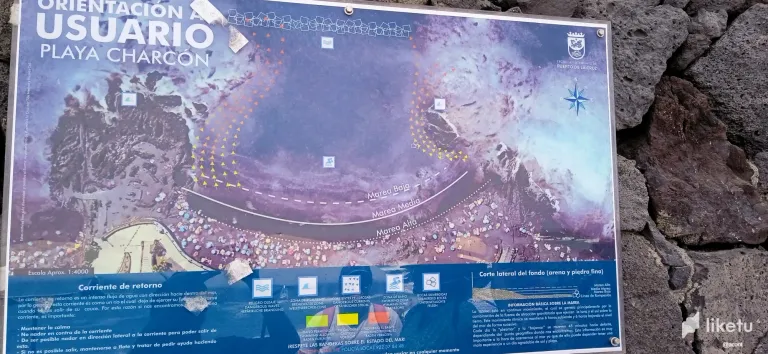
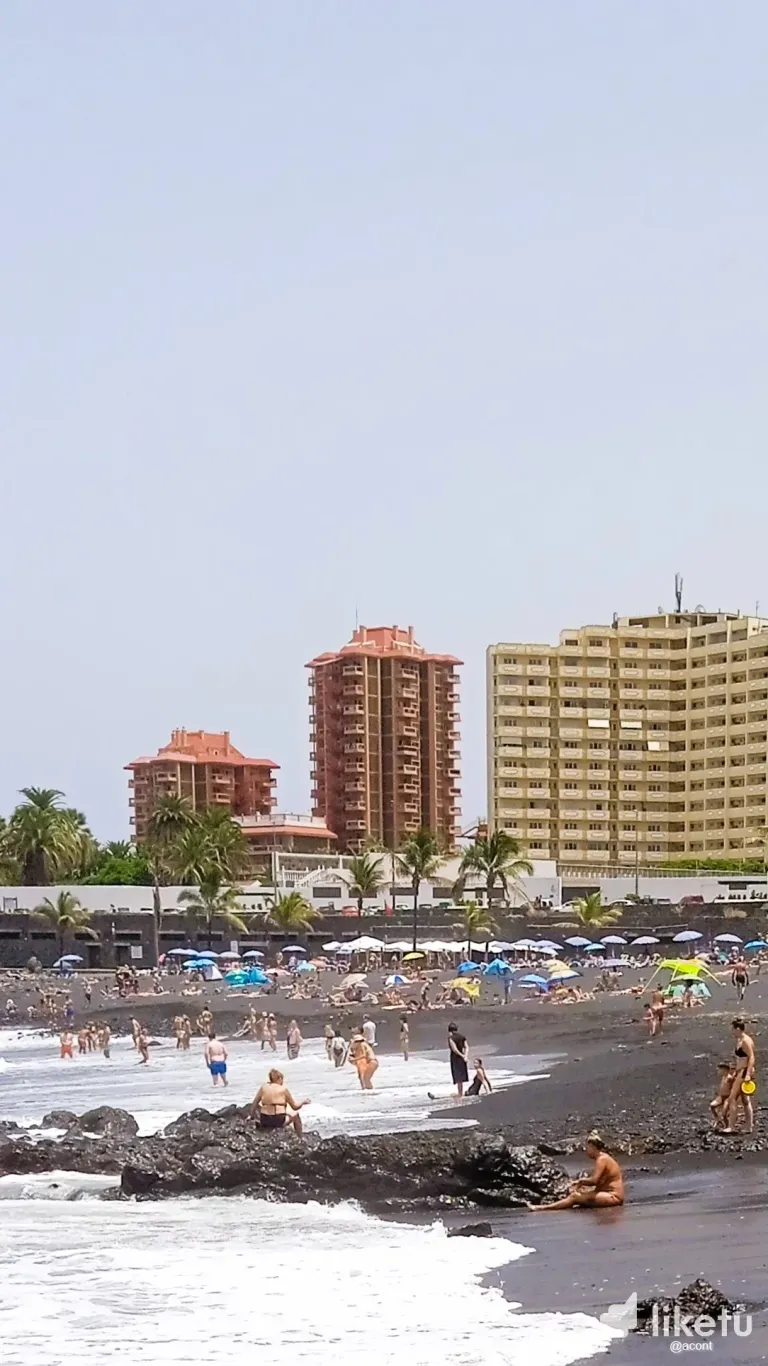
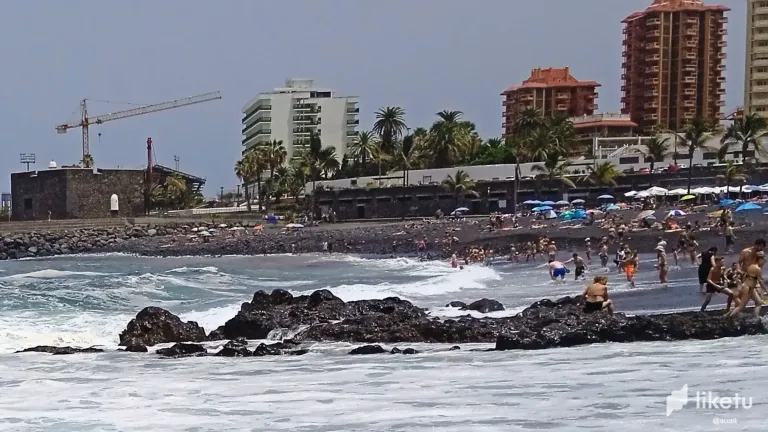



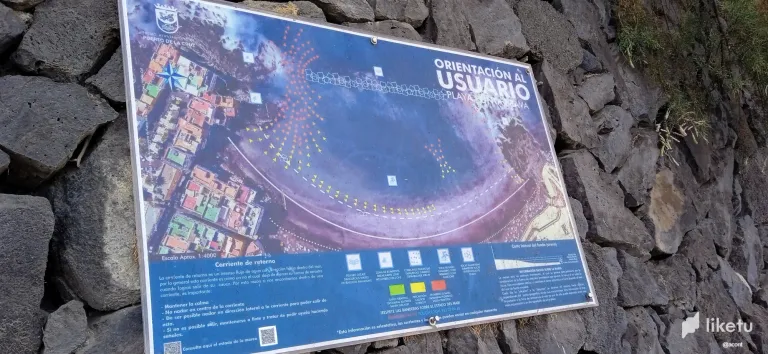

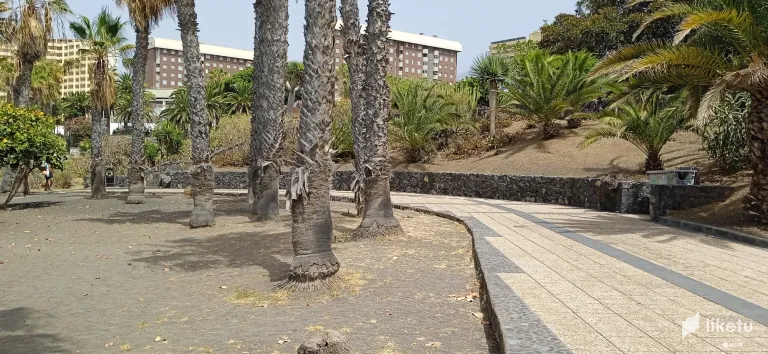
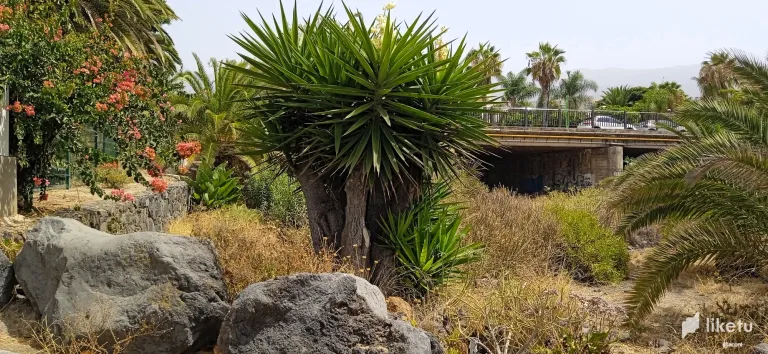
En esta publicación de Liketu les comparto unas fotografías de un día caluroso de verano en las playas de arena negra de Puerto de La Cruz, al norte de la Isla de Tenerife. El día fue realmente caliente en dicha zona, con temperaturas de hasta 36ºC, que se sentían aún más debido al color de la arena, pero al mismo tiempo, se apasiguaban con el frío del agua del mar.
Estas playas e arena negra conforman una especie de balneario que se reparte entre 3 o 4 playas, y un paseo marítimo con algunos servicios y monumentos. Ya anteriormente les había compartido diversas publicaciones sobre la ciudad de Puerto de La Cruz, un entorno con un ambiente único, colonial, marítimo, portuario, y un poco bohemio. Una de ellas, se basaba en un recorrido a pie desde Punta Brava hasta el Castillo de San Felipe: Explorando una Playa de Arena Negra en Tenerife. Te invito a visitar dicha publicación si quieres ver mejores fotografías.
Algo que me gustó de estas playas es que existe información importante sobre ellas, no solamente un mapa detallado de servicios y ubicación de las playas, sino de las corricntes de resaca que pueden presentarse en cada una ¿Sabes lo que es una coriente de resaca? Quizás estés acostumbrado a las playas tranquilas o playas donde no son frecuentes, pero estas corrientes existen y es importante saber cómo reaccionar si quedas atrapado en una.
Estas corrientes se presentan cuando algún tipo de irregularidad o energía de las olas hace que el empuje de regreso o succión se concentre en una zona específica de la playa. Es decir, se genera una especie de "río" que te succiona mar adentro. A veces pueden ser evidentes a simple vista, pero también pueden no son perceptibles.
Si caes en una corriete de resaca lo primero que debes hacer es permanecer tranquilo, y no gastar tus fuerzas en ir en contra de la corriente para intentar regresar a la arena.
Lo mejor es intentar nadar lateralmente a la dirección en la que el mar te succiona (paralelo a la playa), o sino, simplemente dejarse llevar e intentar hacer señas para que alguien pueda rescatarte. Una vez la corriente termina de arrastrarte mar adentro, puede que sea fácil regresar a la orilla por tus propios medios.
¿Conocías esta información? Dicen que al mar hay que tenerle respeto, y con mucha razón. Desde Canarias, soy @acont ¡Hasta la próxima!

In this Liketu post, I share some pictures of a hot summer day on the black sand beaches of Puerto de La Cruz, in the north of Tenerife Island. The day was really hot in that area, with temperatures up to 36ºC, which were felt even more due to the color of the sand, but at the same time, they were cooled by the cold seawater.
These black sand beaches form a kind of seaside resort divided between 3 or 4 beaches, and a promenade with some services and monuments. I had previously shared with you several publications about the city of Puerto de La Cruz, an environment with a unique atmosphere, colonial, maritime, port, and a little bohemian. One of them was based on a walking tour from Punta Brava to the Castillo de San Felipe: Exploring a Black Sand Beach in Tenerife. I invite you to visit that post if you want to see better pictures.
Something I liked about these beaches is that there is important information about them, not only a detailed map of services and location of the beaches but also about the rip currents that can occur in each one. Do you know what a coriente de resaca is? Maybe you are used to calming beaches or beaches where they are not frequent, but these currents exist and it is important to know how to react if you get caught in one.
These currents occur when some kind of irregularity or energy of the waves causes the return thrust or suction to concentrate in a specific area of the beach. In other words, a kind of "river" is generated that sucks you out to sea. Sometimes they can be evident to the naked eye, but they can also be unnoticeable.
If you fall into an undertow, the first thing to do is to stay calm and not waste your strength in going against the current to try to return to the sand.
The best thing to do is to try to swim sideways to the direction in which the sea sucks you (parallel to the beach), or else, just let yourself go and try to signal for someone to rescue you. Once the current has finished dragging you out to sea, it may be easy to return to shore under your own power.
Did you know this information? They say you have to respect the sea, and rightly so. From the Canary Islands, I'm @acont See you next time!
Translated to English language with the help of DeepL.com
Fotografías de autoría propia / Own photos (Redmi 9C)
Otras redes sociales:
 |
 |
 |
F1 & motorsports: @acontmotor
Expresión Creativa. Literatura | Entretenimiento | Arte: @acontblog
| ¡Gracias por visitar! — ¡Thanks for visiting!  |
For the best experience view this post on Liketu
https://twitter.com/acontcivil/status/1748835304906039502 #POSH
Congratulations @acont!
You raised your level and are now a Minnow!